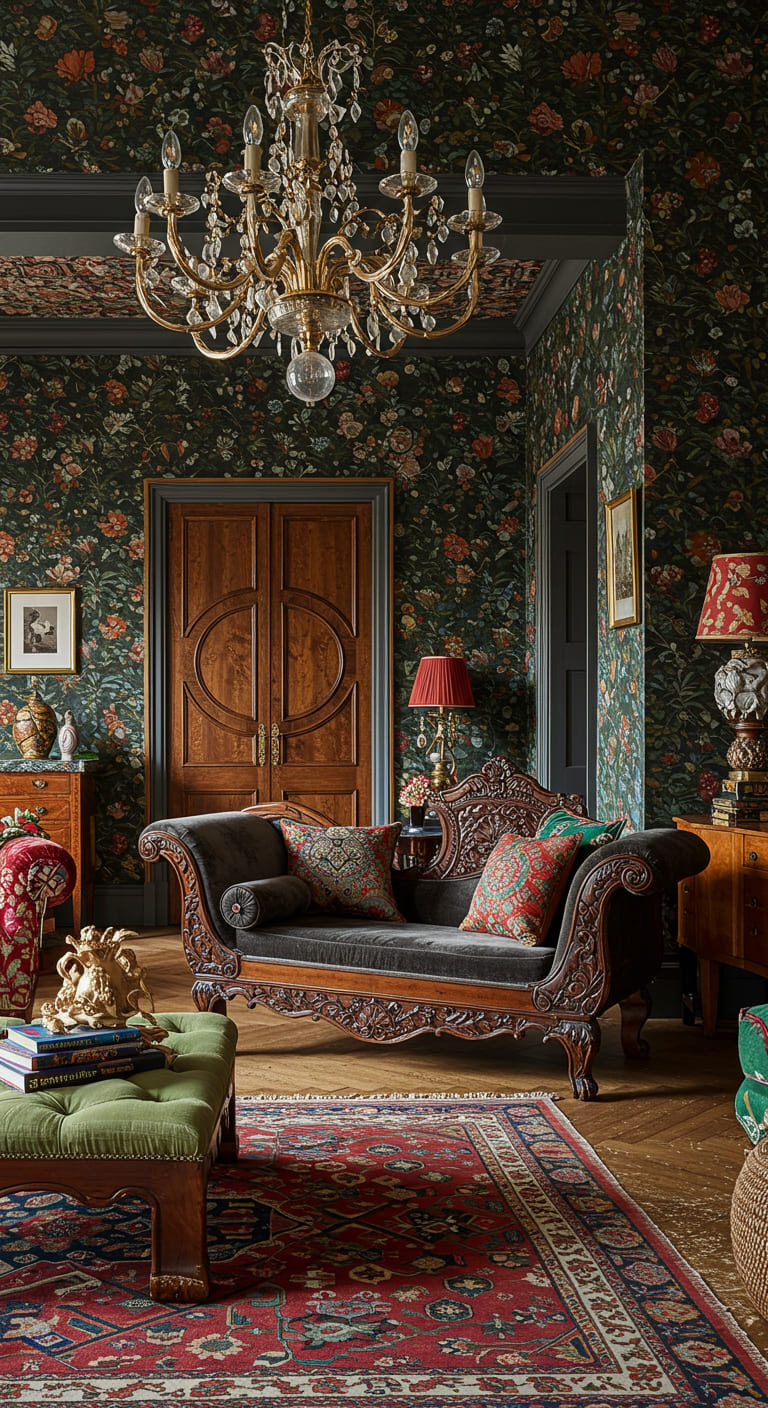As I embarked on my journey into the world of interior design, I quickly realized that understanding the fundamental principles was crucial to transforming any space. Whether I was revamping my own home or assisting a friend with theirs, these design principles became my guiding light. In this article, I’ll share my insights on the core interior design principles that can help you create beautiful, functional, and harmonious spaces. Together, let’s discover how to breathe life into your surroundings!
Understanding the Basics of Interior Design
Interior design is not merely about aesthetics; it is a meticulous blend of art and science aimed at improving the quality of life and culture of the occupants. When I first delved into this field, I learned that a successful design is built upon several key principles:
- Balance
- Rhythm
- Emphasis
- Scale and Proportion
- Harmony and Unity
- Details
Each of these principles plays a vital role in how we perceive and interact with space. Let’s explore each one in detail!
1. Balance: The Foundation of Design
Balance is the distribution of visual weight in a room. It can be achieved through symmetrical or asymmetrical arrangements. When I think of balance, I picture a seesaw; if one side is heavier, it tips. Interior design works the same way.
Types of Balance
- Symmetrical Balance: This is achieved when elements are arranged equally on both sides of a central axis. It creates a formal and orderly feel, often found in traditional settings.
- Asymmetrical Balance: This involves a more casual arrangement where different elements have equal visual weight. It creates a dynamic and interesting space, perfect for modern designs.
- Radial Balance: This is where elements radiate from a central point, like a circular arrangement of furniture around a coffee table.
For instance, in my living room, I utilized symmetrical balance by placing identical lamps on either side of my couch, flanking a central piece of art. This not only created harmony but also drew the eye to the art piece, instilling a sense of order.
2. Rhythm: Creating Flow and Movement
Rhythm in interior design is about creating a sense of movement and flow within a space. I discovered that just like music, design has a rhythm that can be established through repetition, progression, and contrast.
Ways to Achieve Rhythm
- Repetition: This involves reusing similar elements, like colors or shapes, throughout a room.
- Progression: This can be achieved through a gradual change in color or size, leading the eye from one area to another.
- Contrast: Using different elements to create visual interest and surprise.
In my kitchen, I created rhythm by repeating the same color scheme from the backsplash to the bar stools. It not only connected the spaces but also provided a cohesive look that felt inviting.
3. Emphasis: Drawing Attention
Emphasis is about making a statement in your space. It involves highlighting specific areas to create focal points. I learned that every room should have a primary element that draws attention; this could be an artwork, a piece of furniture, or even a dramatic light fixture.
Methods to Create Emphasis
- Contrast: Using contrasting colors or shapes to highlight the focal point.
- Placement: Positioning an item in a way that naturally draws the eye.
- Lighting: Utilizing lighting to highlight a specific area or object.
For example, in my home office, I installed a striking pendant light above my desk. It became the centerpiece of the room, not only providing illumination but also setting the tone for creativity and productivity.
4. Scale and Proportion: The Art of Size
Understanding scale and proportion is essential in interior design. Scale refers to the size of an object in relation to the space around it, while proportion is about the relationship between the sizes of different elements. I found that getting this right can make or break a design.
Tips for Achieving Proper Scale and Proportion
- Consider Room Size: Choose furniture that fits the scale of the room—oversized couches can overwhelm small spaces, while tiny pieces can get lost in large areas.
- Mixing Sizes: Don’t be afraid to mix various sizes; just ensure they complement each other.
- Use Visual Anchors: Large pieces can serve as anchors in a room, helping to balance smaller items.
In my dining area, I opted for a long, rectangular table that matched the proportions of the room, paired with chairs of varying heights. This created visual interest while maintaining balance.
5. Harmony and Unity: The Cohesive Look
Harmony and unity are about creating a cohesive look throughout your space. It ensures that all elements complement each other, producing a unified theme. I discovered that achieving harmony involves the careful selection of colors, materials, and textures.
Ways to Achieve Harmony and Unity
- Color Palette: Select a limited color palette that resonates throughout the space.
- Material Selection: Use similar materials or textures to create a sense of cohesion.
- Design Style: Stick to a specific design style, whether it be modern, rustic, or eclectic.
In my bedroom, I chose a soothing color palette of blues and grays, using the same fabrics for curtains and bedding. This created a serene environment, perfect for relaxation.
6. Details: The Finishing Touches
Details are what set a well-designed space apart from an average one. It’s the little things—accessories, textures, and finishes—that can elevate a room. I learned that paying attention to details can make a substantial difference in how a space feels.
Key Details to Consider
- Accessories: Incorporate art, plants, or books that reflect your personality.
- Textures: Mix different textures like smooth, rough, soft, and hard to add depth.
- Lighting: Layer different sources of light to enhance the mood.
In my living room, I added various textured cushions and a soft throw blanket. These details not only added comfort but also created visual interest, making the space feel inviting.
Putting It All Together: A Case Study
Let’s take a look at a real-life example of applying these principles. When I helped a friend redesign her small apartment, we faced the challenge of maximizing space while ensuring it felt cozy and functional.
Here’s how we implemented the interior design principles:
- Balance: We placed a symmetrical sofa arrangement in the living area, flanked by two armchairs.
- Rhythm: We used a consistent color scheme of teal and gold, creating a sense of flow from room to room.
- Emphasis: A large piece of artwork above the sofa became the focal point, capturing attention instantly.
- Scale and Proportion: We chose a small dining table that fit perfectly within the kitchen nook.
- Harmony and Unity: We ensured all furniture pieces shared a similar aesthetic, creating a cohesive look.
- Details: We added plants, decorative pillows, and unique lighting fixtures to add personality and warmth.
The transformation was astounding! My friend’s apartment was now not only stylish but also functional, making the best use of every square foot.
Conclusion: Transform Your Space Today!
Understanding and applying the interior design principles can dramatically enhance the look and feel of any space. Whether you’re a seasoned designer or a novice, these principles serve as a roadmap for creating environments that are both beautiful and functional.
As I reflect on my journey, I encourage you to explore these principles in your own home. Start small, experiment with different elements, and don’t be afraid to make mistakes. Your space is a reflection of you, and with the right principles in mind, you can transform it into a sanctuary that resonates with your personality.
Frequently Asked Questions
Q: What is the most important interior design principle?
A: While all principles are important, balance is often considered the foundation of effective design. It ensures that the space feels stable and visually appealing.
Q: How can I create a focal point in my room?
A: You can create a focal point by using contrasting colors, unique furniture, or a striking piece of artwork that draws attention.
Q: Is it necessary to follow all design principles?
A: While it’s beneficial to understand and apply these principles, your personal style and preferences should ultimately guide your design choices.
Ready to transform your space? Subscribe to our newsletter for more tips and inspiration. And if you found this article helpful, please share it with friends and on social media!
AMOAMI Upgraded Waffle Bath Mat, Super Absorbent Non Slip Bath Mats for Bathroom Floor, Machine Washable Bathroom Rugs with Tassels, Rubber Backed Bathroom Mats, Ultra Soft, 17" x 24", Brown
$9.99 (as of 30/03/2025 01:25 GMT -03:00 - More infoProduct prices and availability are accurate as of the date/time indicated and are subject to change. Any price and availability information displayed on [relevant Amazon Site(s), as applicable] at the time of purchase will apply to the purchase of this product.)
Sign up for our newsletter and stay up to date with exclusive news
that can transform your routine!




